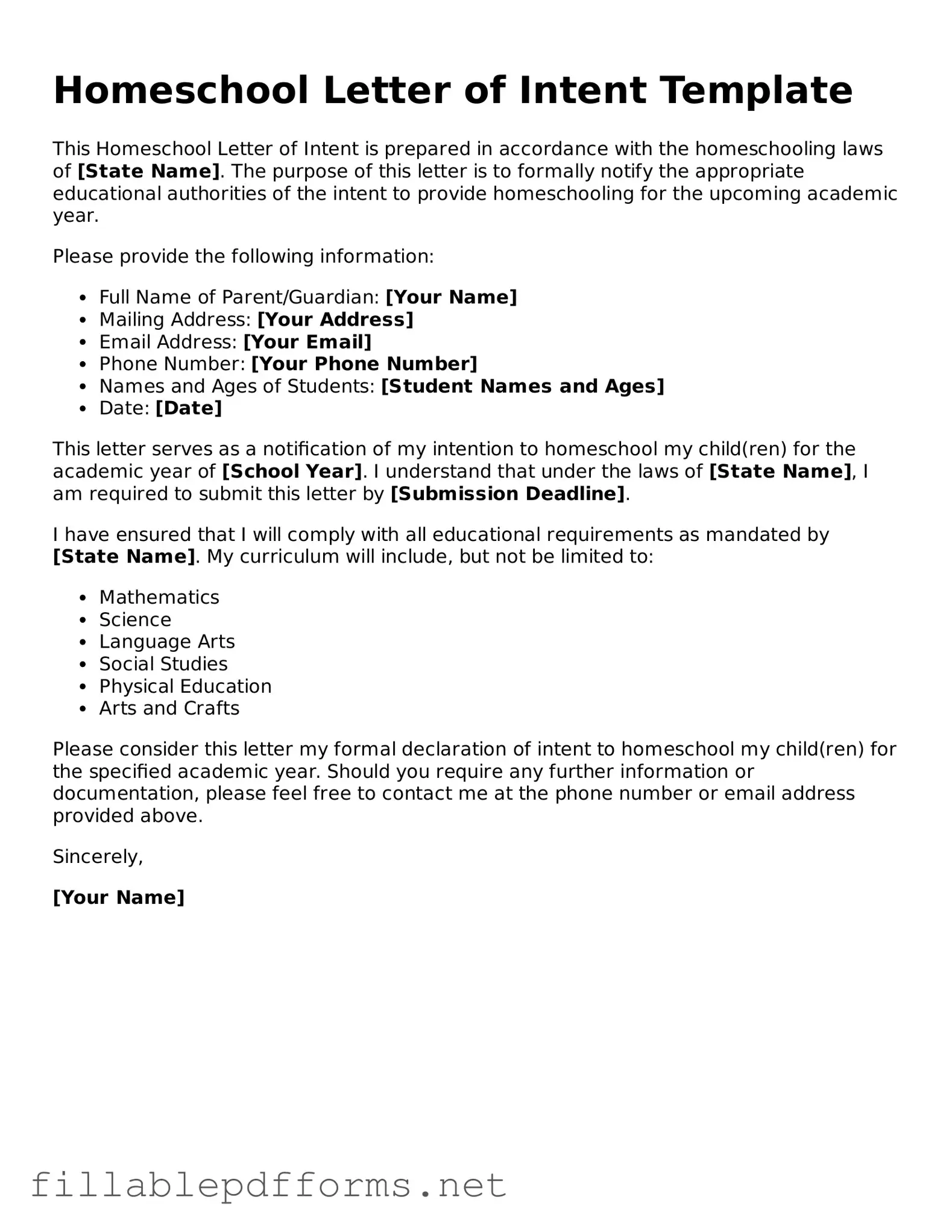Blank Homeschool Letter of Intent Template
The Homeschool Letter of Intent is a formal document that parents submit to their local school district, indicating their intention to educate their children at home. This letter serves as a notification and outlines the parents' commitment to providing an educational experience outside of traditional schooling. Understanding how to properly complete and submit this form is essential for any family considering homeschooling.
Launch Editor Here
